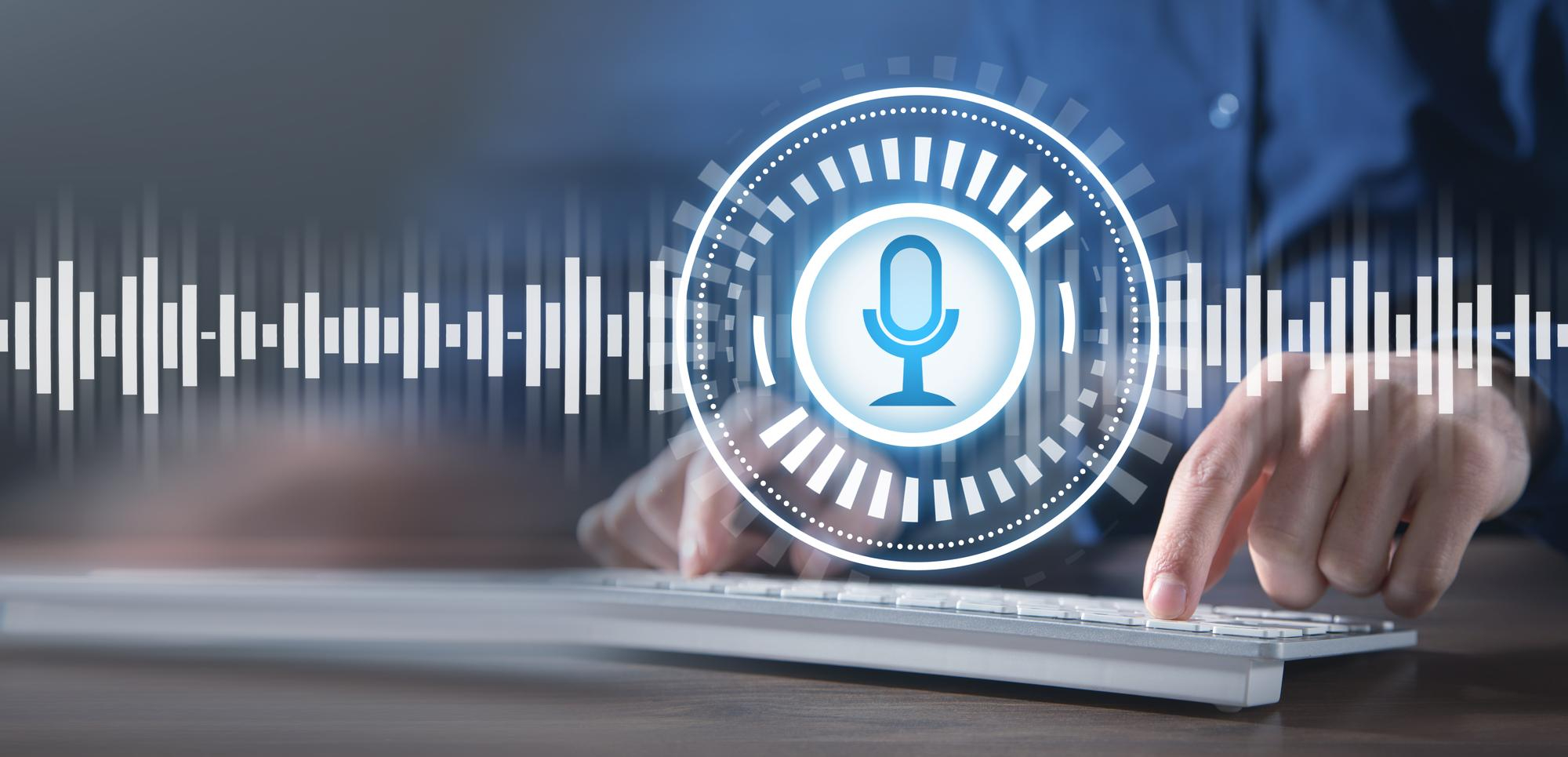Introduction
Artificial intelligence (AI) has been a topic of research for decades, and it has become an integral part of our daily lives. One of the most significant applications of AI is in Natural Language Processing (NLP), which deals with the interaction between computers and humans using natural language. NLP has advanced significantly in recent years, leading to breakthroughs in speech recognition and language translation.
this blog post, we will explore the latest developments in these areas.
Speech Recognition
Speech recognition, also known as automatic speech recognition (ASR), is the ability of a machine to understand and interpret human speech. ASR technology has been around for many years, but recent advancements in AI and machine learning have led to significant improvements in accuracy and efficiency.
1. CNNs and RNNs – One of the most significant breakthroughs in ASR technology is the development of deep learning algorithms, specifically convolutional neural networks (CNNs) and recurrent neural networks (RNNs). CNNs are used to extract features from audio signals, while RNNs are use to model the temporal relationships between the extracted features. This approach has led to remarkable improvements in speech recognition accuracy.
There are several live examples of ASR technology that incorporate deep learning algorithms like CNNs and RNNs:
- Siri – Apple’s virtual assistant uses speech recognition to interpret voice commands and perform tasks like making calls, sending messages, setting reminders, and providing information.
- Alexa – Amazon’s smart assistant is another example of ASR technology that uses deep learning algorithms to understand and respond to voice commands.
- Google Assistant – Google’s virtual assistant uses ASR technology to understand voice queries and provide relevant answers or perform requested tasks.
- Dragon Naturally Speaking – This software is designed specifically for dictation and speech recognition, allowing users to dictate text into a computer or mobile device with high accuracy.
- Microsoft Speech Recognition – Microsoft’s built-in speech recognition software allows users to dictate text and control their computer using voice commands.
All of these examples rely on deep learning algorithms like CNNs and RNNs to improve speech recognition accuracy and provide more accurate and natural language processing.
2. End to End Models – Another significant advancement in speech recognition is the development of end-to-end models. Traditional ASR systems are composed of multiple modules, including acoustic modeling, language modeling, and decoding. End-to-end models, on the other hand, use a single neural network to map the audio input directly to text output. These models have shown great promise in achieving state-of-the-art performance on various speech recognition tasks.
Here are some examples of the development of end-to-end models in speech recognition:
- DeepSpeech : Mozilla’s open-source speech recognition engine that uses a deep neural network architecture to directly transcribe audio to text. DeepSpeech is trained end-to-end on a large corpus of audio and text data and has achieved state-of-the-art performance on several benchmark datasets.
- WaveNet : A deep generative model developed by Google for speech synthesis that can also be used for speech recognition. WaveNet is trained end-to-end to model the distribution of raw audio waveforms directly, without using any intermediate representations.
- Listen, Attend and Spell (LAS) : An end-to-end model for automatic speech recognition that uses an attention mechanism to align input audio features with output text characters. LAS has achieved state-of-the-art performance on several benchmark datasets.
- Speech Transformer : A sequence-to-sequence model that uses a self-attention mechanism to directly map audio to text. The model is trained end-to-end on a large corpus of speech and text data and has achieved state-of-the-art performance on several benchmark datasets.
- Jasper : A deep convolutional neural network architecture designed specifically for end-to-end speech recognition. Jasper has achieved state-of-the-art performance on several benchmark datasets, including the Wall Street Journal dataset.
All of these models demonstrate the potential for end-to-end approaches in speech recognition and have achieved state-of-the-art performance on several benchmark datasets.
Language Translation
Language translation, also known as machine translation (MT), is the ability of a machine to translate text from one language to another. MT has been around for several decades, but recent advancements in AI and NLP have led to significant improvements in accuracy and fluency.
1. NMT models – One of the most significant breakthroughs in MT is the development of neural machine translation (NMT) models. NMT models use neural networks to translate text from one language to another. These models have shown great promise in achieving state-of-the-art performance on various MT tasks.
NMT models are based on the encoder-decoder architecture. The encoder reads the input sentence and converts it into a fixed-length vector representation, while the decoder generates the output sentence based on the encoded vector. The use of attention mechanisms has further improved the performance of NMT models by allowing the decoder to focus on specific parts of the input sentence during the translation process.
2. UMT Models – Another significant advancement in MT is the development of unsupervised machine translation (UMT) models. UMT models do not require parallel corpora, which are sets of translated sentences used to train MT models. Instead, UMT models learn to translate from scratch by aligning the representations of two languages in an unsupervised manner. These models have shown great promise in enabling low-resource languages to benefit from MT.
Transforming Communication: The Revolutionary Advances in AI and NLP for Speech Recognition and Language Translation
This section will cover three breakthroughs in AI and NLP that have transformed the fields of speech recognition and language translation.
Deep Learning
Deep learning is a subset of machine learning that uses artificial neural networks to simulate the human brain’s functioning. Deep learning has revolutionized speech recognition by enabling computers to recognize speech patterns and nuances in human speech. In recent years, deep learning algorithms have achieved accuracy rates of up to 95% in speech recognition, making it possible for computers to transcribe human speech accurately. Deep learning has also improved language translation by enabling computers to recognize and translate idiomatic expressions and colloquialisms accurately.
Deep learning has also been used in speech synthesis, which is the process of generating human-like speech from computer-generated text. Speech synthesis has been around for a while, but deep learning has significantly improved the quality of synthesized speech. Today, deep learning-based speech synthesis is used in various applications, including GPS navigation, audio books, and virtual assistants.
Neural Machine Translation (NMT)
Neural Machine Translation (NMT) is a subset of machine learning that uses artificial neural networks to translate one language to another. NMT has revolutionized language translation by enabling computers to learn how to translate languages without relying on pre-defined rules or templates. Unlike traditional rule-based machine translation, which relies on a set of pre-defined rules to translate languages, NMT learns how to translate languages by analyzing large datasets of parallel texts.
NMT has significantly improved translation accuracy, making it possible for computers to translate idiomatic expressions, colloquialisms, and complex sentences accurately. Today, NMT has become the backbone of many online translation services, enabling people to communicate effectively across language barriers.
Voice Assistants
Voice assistants have become ubiquitous in recent years, with millions of people using them daily to perform routine tasks. Voice assistants use speech recognition and NLP to understand human speech and respond accordingly. Voice assistants have revolutionized the way we interact with computers, making it possible to perform tasks using voice commands.
Voice assistants have become an integral part of our daily lives, enabling us to set reminders, make calls, and control smart home devices using voice commands. The development of voice assistants has been made possible by advancements in speech recognition and NLP, particularly in the areas of deep learning and NMT.
Conclusion
The advancements in AI and NLP have revolutionized speech recognition and language translation, making it possible for computers to understand and respond to human speech accurately. Deep learning, NMT, and voice assistants have significantly improved the accuracy of speech recognition and language translation, making it possible for people to communicate effectively across language barriers.
As AI and NLP continue to evolve, we can expect to see further breakthroughs in speech recognition and language translation, enabling us to communicate more effectively with people from different parts of the world. With the continued development of NMT and deep learning, we may see a day when language barriers are a thing of the past, and people can communicate freely and easily, regardless of the language they speak.
The advancements in AI and NLP are transforming many industries, including healthcare, finance, and education. In healthcare, AI-powered NLP is being used to analyze medical records and improve patient outcomes. In finance, AI-powered chatbots are being used to provide personalized financial advice to customers. In education, AI-powered virtual tutors are being used to help students learn new concepts and improve their academic performance.
In conclusion, the advancements in AI and NLP are transforming the way we interact with computers and each other. The future of AI and NLP is bright, and we can expect to see further breakthroughs that will revolutionize many industries and improve our daily lives.
As with any technological advancement, there are also concerns about the impact of AI and NLP on society. Some worry that AI-powered systems could lead to job displacement and income inequality. Others worry about the potential for AI-powered systems to be used for malicious purposes, such as the creation of deep-fake videos or the manipulation of public opinion.
As we continue to develop AI and NLP, it is essential to consider these concerns and work to mitigate their impact. By doing so, we can ensure that the benefits of AI and NLP are available to everyone, and that these technologies are used for the greater good.
In short, AI and NLP are rapidly changing the world we live in, and the future looks exciting. We can expect to see further breakthroughs in speech recognition and language translation, as well as in other areas of AI and NLP. As we continue to develop these technologies, it is essential to consider their impact on society and work to ensure that they are used for the greater good.


